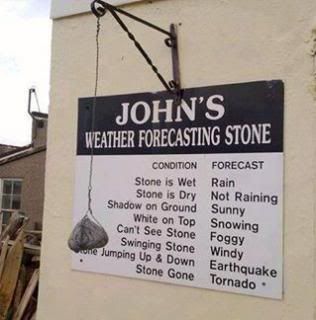The stream in the woodland I visit dries up every year and the owner was wondering how the humidity change was impacting on the woodland so he bought a cheap humidity meter an electronic unit really designed for measuring humidity and temperature in house. Some clearly erroneous readings of 0% were recorded and although to start with 75% was recorded it then went to 100% and seemed to stay there. It was in a old bird box to protect from direct rain.
I bought a weather station temperature, humidity, and pressure with a remote unit which also reads temperature and humidity and tested the remote at home in the green house and to begin with like the other unit seemed to work but then that also started to show 95% which is the maximum it will record all through the day. So moved from greenhouse to shed and still only reading was 95%. I then moved in doors and very slowly the readings did start to move now one day latter showing 60% and all seems fine but it took a good 12 hours to show the reduced humidity and humidity changes quicker than that a lag of one hour may be acceptable but 12 hours makes it rather useless as over night it will likely reach 100% and the units never seem to recover over the day to give a near true reading.
Against all measurements my weather station shows trend up, static, or down and I would have thought if showing static then the unit had normalised to that environment however this from my experiments with just two units does not seem to be the case.
So ideas how can one measure humidity in the woodland? Is it down to old wet dry thermometer or is there some other way?
Because the temperature in the woodland varies I had used excel to show dew point and then back to show percent humidity at another temperature so I can truly compare moisture in the air. I wanted to see what the real difference was where the stream was running and where dry as air movement could still be taking moisture into dry stream areas. The stream dries because of sink holes in the lime stone and damming up stream has resulted in more water going through sink holes and so wanted to see if any correction was needed i.e. fill in some sink holes.
Personally I know very little about woodland management but as an engineer I was trying to help with measurement but clearly I have failed. Any ideas or personal experience into measuring humidity?

